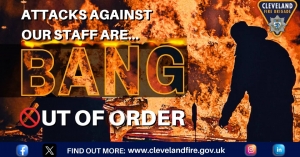Data from the UK Fire and Rescue Service (FRS) show that cases of carbon monoxide (CO) poisoning have risen steadily from 2450 incidents in 2014 to 3249 in 2019. The FRS is usually one of the first emergency services on the scene in the event of a CO leak.
This year’s report by campaign group Project SHOUT has revealed the extent of the problem. Carbon monoxide is a poisonous gas that is produced when fuel doesn’t burn properly, usually from badly fitted or poorly maintained appliances. Common sources of CO are gas and oil boilers, gas hobs and fires, log burners, open fires and BBQ’s.
You can’t see, smell or taste carbon monoxide, which is why it is known as the silent killer.
Common symptoms include dizziness, tiredness, headaches, nausea and generally feeling unwell. CO poisoning is often mistaken for something else such as a hangover, a common cold and the flu. The elderly and the very young are particularly vulnerable.
Alarms are the only way to detect carbon monoxide. With an estimated two-thirds of homes unprotected by an alarm, around 40 million people are at risk.
Further research by Project SHOUT has revealed that over one third (35%) of people wouldn’t recognise the symptoms of CO poisoning at all. They found 80% of residents in properties that DO have an alarm admit that they have no idea whether it works or not as they never test it.
The campaign group is stressing the importance of where to put your alarm and what to do if your alarm goes off.
CO alarms need to be placed in the correct locations – between 1m and 3m away from any fuel-burning appliance as well as in highly populated areas such as bedrooms and living rooms.
Project SHOUT also advise purchasing a CO alarm that complies with British Standard EN 50291 and carries a British or European approval mark, such as a Kitemark, to ensure you are protected.
Make sure your gas appliances are installed and serviced regularly by a qualified GAS SAFE registered engineer.






































